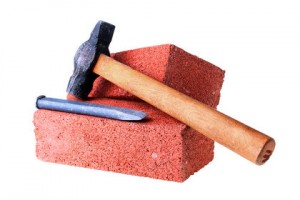By Peter Ricci
Have you ever wondered by chrome seems so common in New England homes? Or why the shiny, shimmering textures of bronze always pop up in Texas dwellings? The NAHB Research Center just combed through 15 years-worth of construction materials in its annual survey of residential builders, and it found some very interesting trends for what building materials are the most common for certain geographical areas.
Geographical Demand for Building Materials
First, we’ll begin with the South Atlantic region, which includes Florida. Here were some of the NAHB Research Center’s main findings for the region:
- Granite, which has been a major component to homes in the last couple decades, was particularly prevalent in the South Atlantic region, with 84 percent of luxury homes in the area installing granite in the kitchen.
- The key to granite’s appeal, said Mary Preston Yates, a broker with Prudential Carolinas Realty, to the Wall Street Journal, is its durability and especially its versatility. From a cool condo on Miami Beach to a Spanish-style single-family home the calming patterns and colors to granite allow it to adapt to almost any residence.
Form Follows Function with Building Materials
It was Chicago architect Louis Sullivan who first said “form follows function,” and when looking at the building materials in the other regions of the U.S., it’d be difficult to argue with him. The Mountain region, for instance, with its trend for natural living, loves stone and exposed wood, and though bronze finishes are popular, they are often sod with a worn finish to match the rugged features of the fellow furnishings.
Similarly, in New England, hardwood flooring is extremely popular because of how naturally it complements the Cape Cod/Colonial homes in the region – traditional flooring for traditional housing; Southern California homes, where Mediterranean architecture is common, opt for the muted tones of satin nickel or oil-rubbed bronze, rather than chrome; and the Middle Atlantic region – where Hurricane Sandy recently made a stink – wood-plastic composite decking (which is more durable and moisture-resistant than wood) is huge, increasing in usage by 63 percent from 2006 to 2011.


Nice stuff here. I enjoyed reading the post. Surely geography influences the building material, we can’t deny that.